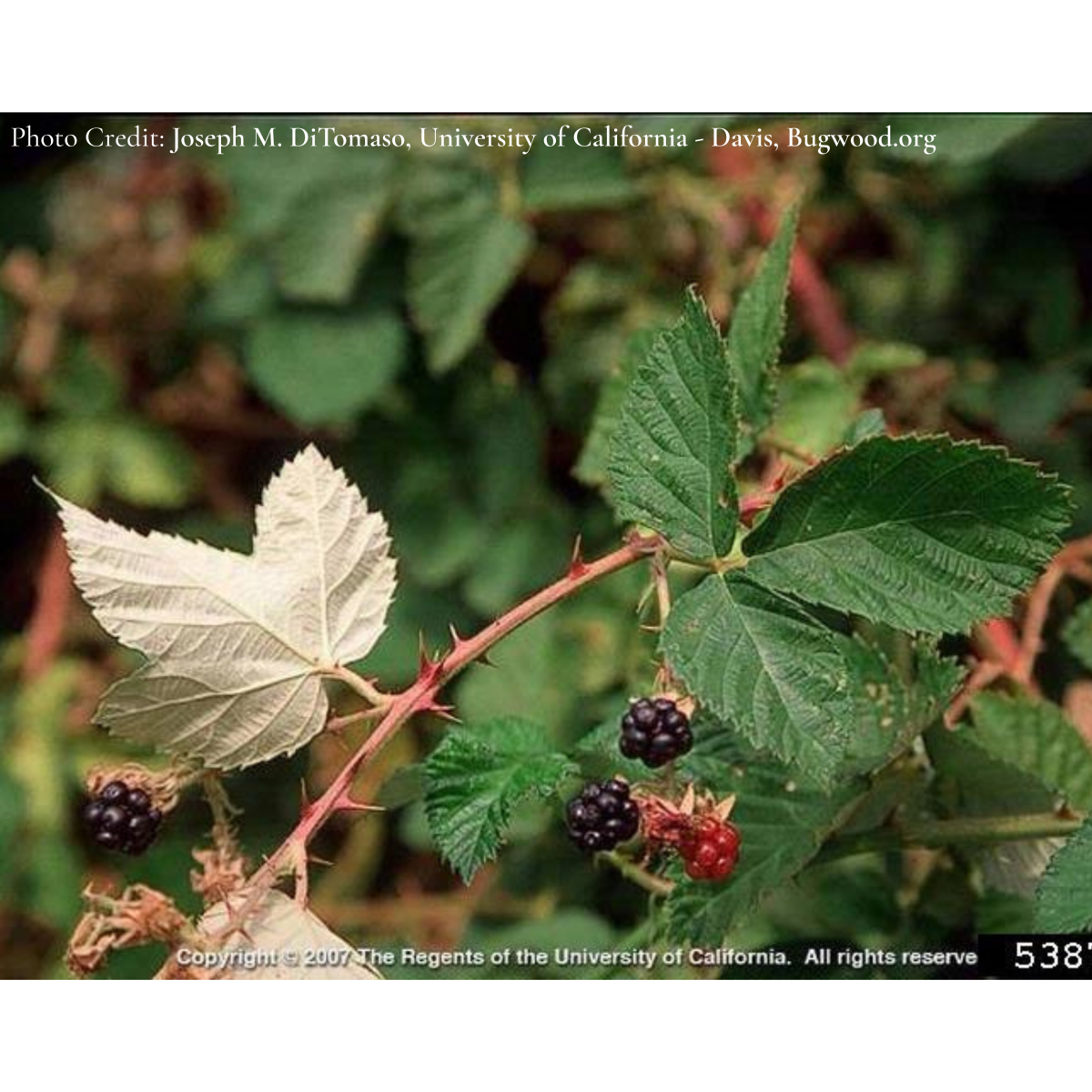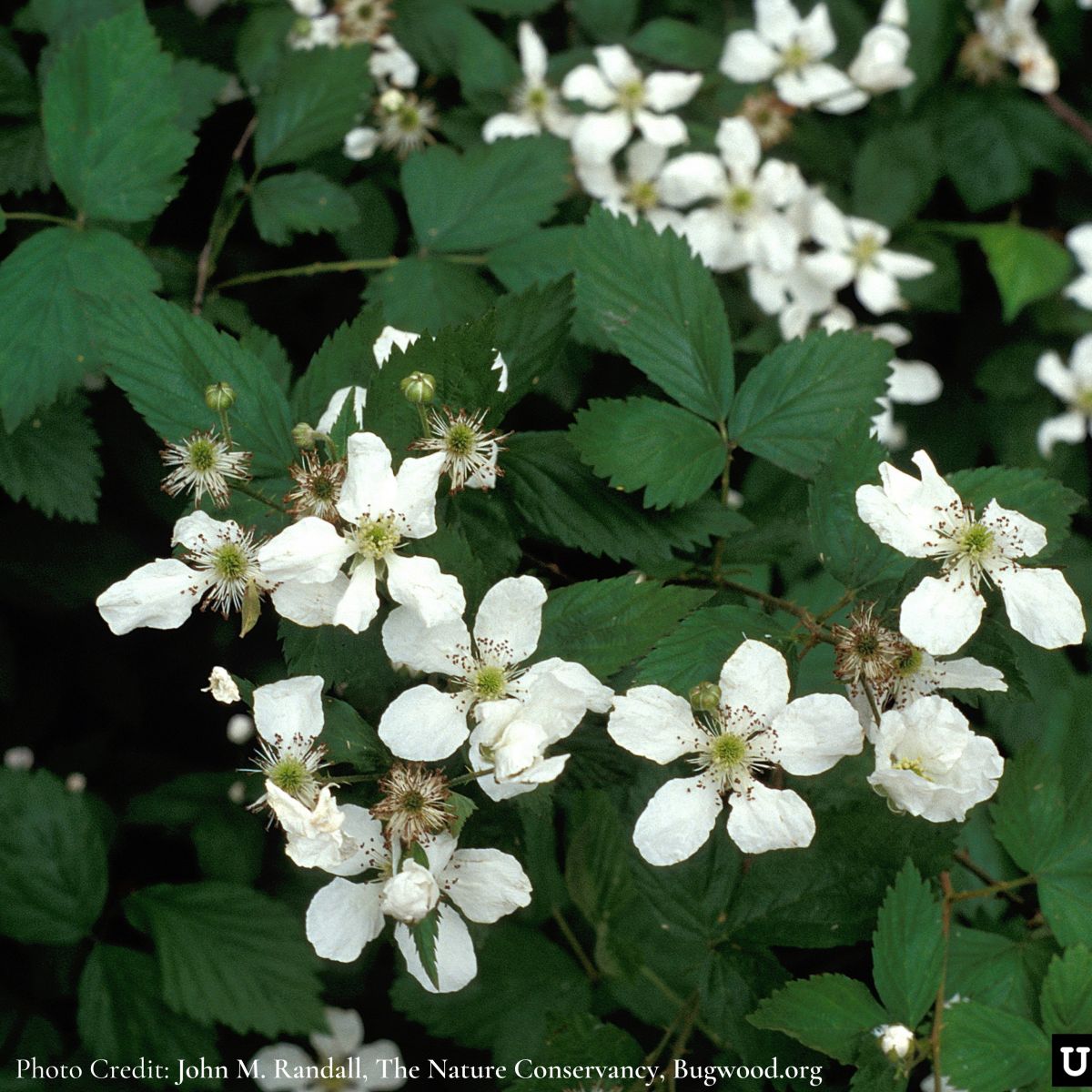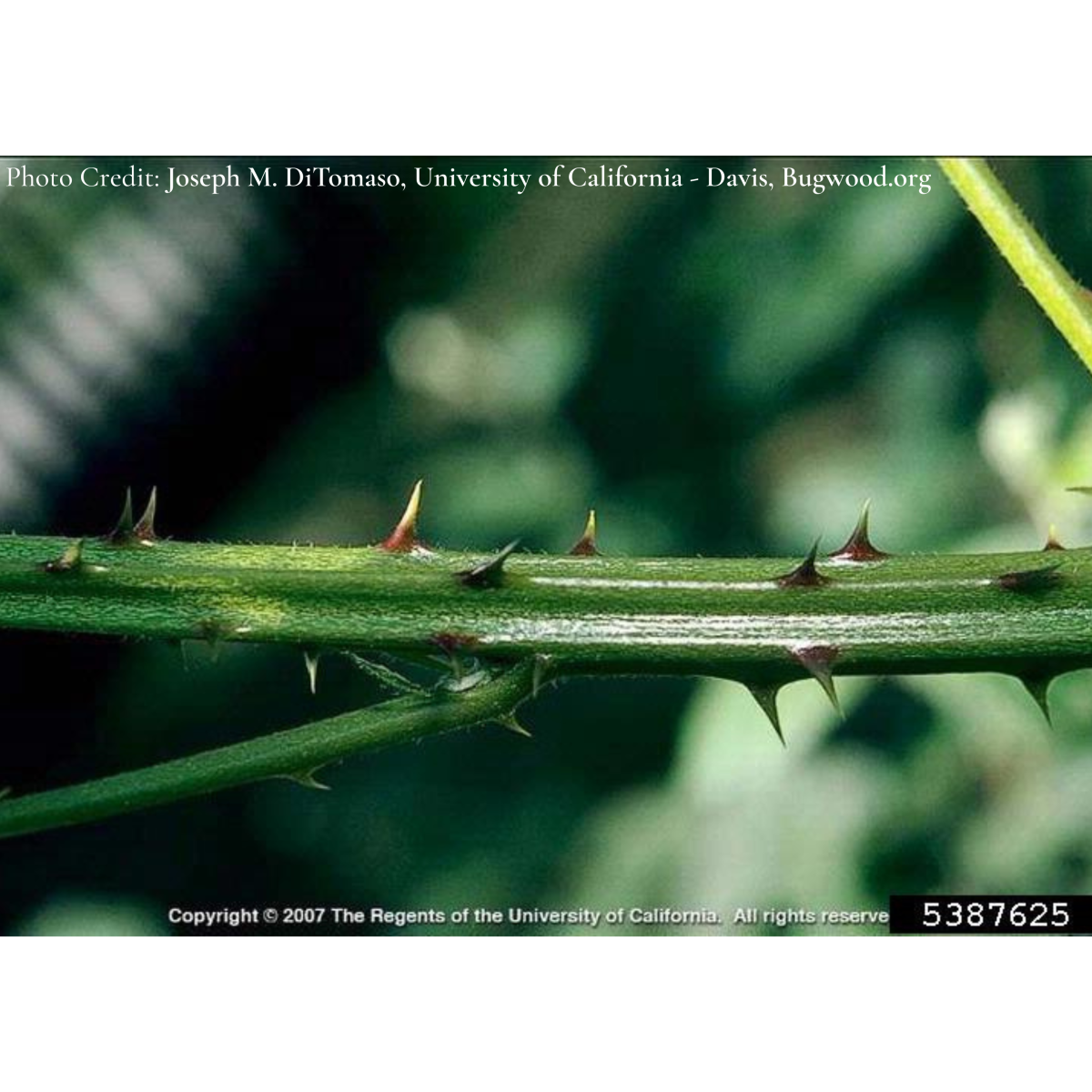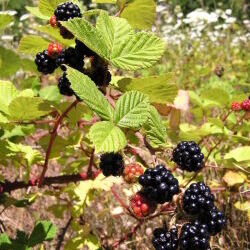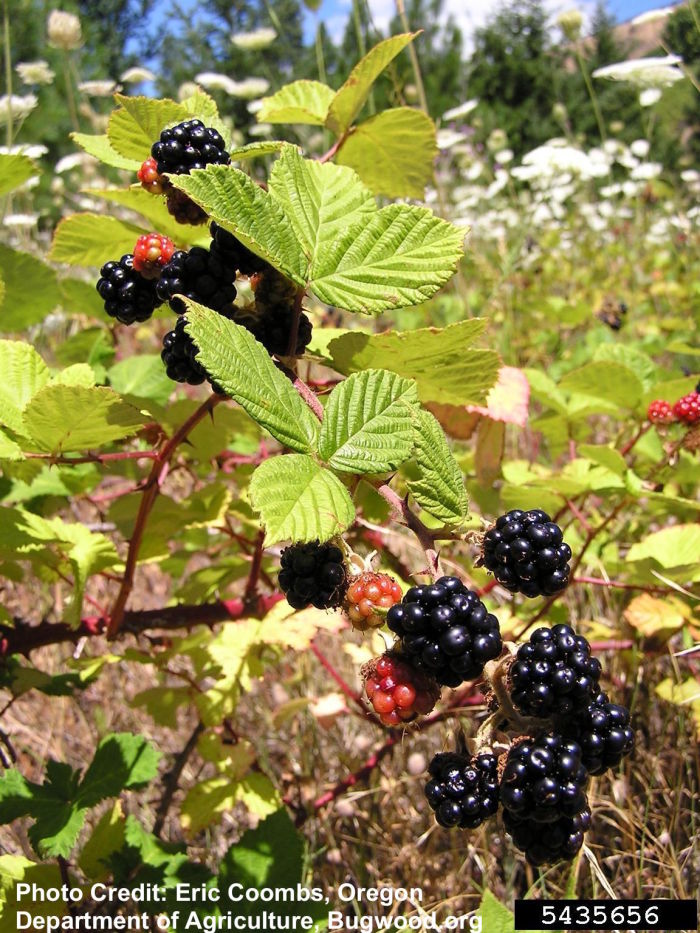
Priority: Contain
General: Aggressive growing, evergreen shrub with edible black berries and thorny stems.
Height: Grows up to 3m.
Flowers: Small flowers with 5 petals that are white to pink.
Leaves/Stems: Stems are 5-angled with hooked thorns. Leaves are 5-20cm long, described as double-saw-toothed edges, green and smooth on top and wooly on the underside.
Root: Root balls.
None
Trailing Blackberry (Rubus ursinus), a native plant found in BC.
Differences: Trailing blackberry is a deciduous shrub. It has smaller stems than Himalayan. The stem has a waxy coating making it look bluish in colour.
Where did it come from? Native to Armenia and introduced to North America in 1885. Found in BC in early 1970’s.
Where does it grow here? It typically grows in disturbed areas like railways, roads and abandoned house sites. It will grow on very poor infertile soil. It does require adequate soil moisture so it is found on properties along Anderson & Seton Lakes.
Reproduction: Spreads by seed, underground root and stem buds.
When does it grow, flower & seed? Sprouts in spring. Flowers June-August. Fruit forms August-September. Seeds in fall.
Spreads By: The seeds are spread by birds and other animals. People still plant this invasive variety because the fruit tastes good.
Plant Type: Biennial.
- Forms dense thickets taking over natural areas including streams, rivers and lakeshores. The native vegetation can’t compete.
- Dense thickets can obstruct pathways, trails and fence lines.
- Thickets can cause safety issues on roads by obstructing sight lines.
- The thorns can cause skin irritation, scratches and small wounds on people.
- Takes over other flowering plants and shrubs decreasing access to pollinators.
- Review your property regularly for this species.
- Treatment can only be successful using multiple methods and dedication over a number of years. Remove small patches before it flowers & sets seed. Only very small patches and plants can be hand-pulled or dug out. The full plant and roots must be removed. Refer to the Best Management Practices for Himalayan Blackberry written by Metro Vancouver and the Invasive Species Council of Metro Vancouver.
- Cover bare patches or disturbed soil by planting or seeding with non-invasives.
- Check areas where you have removed invasives for any new plants that year and in future growing seasons.
- Dispose of invasive plants responsibly. Bag them for disposal at the local landfill. Composting and burning are not recommended.
- Contact LRISS for specific treatment recommendations.
Tirmenstein, D. 1989. Rubus armeniacus. In: Fire Effects Information System, [Online]. U.S. Department of Agriculture, Forest Service, Rocky Mountain Research Station, Fire Sciences Laboratory (Producer).
https://www.fs.fed.us/database/feis/plants/shrub/rubarm/all.html
Metro Vancouver & Invasive Species Council of Metro Vancouver. Best Management Practices for Himalayan Blackberry in the Metro Vancouver Region. March 2019.
Photo Gallery
